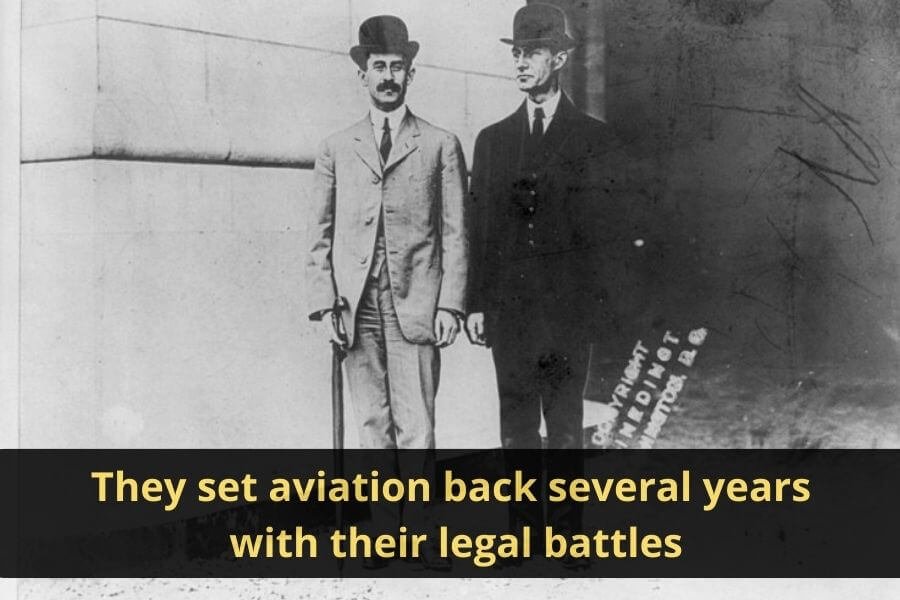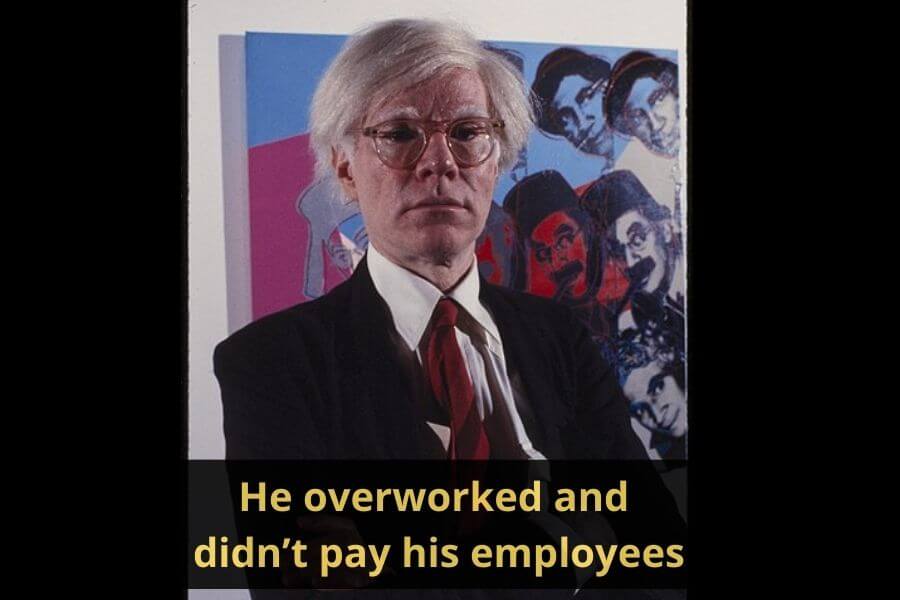History, as we know it, has been a long, dramatic soap opera, just with fewer commercial breaks. While the polished portraits of famous people make them look perfect, the truth is spicier than your favorite scandal-filled reality show. Dive in as we uncover some shocking, hilarious, and downright weird facts about the historical figures we thought we knew!
Michelangelo: The Original Art Scammer

Michelangelo may be hailed as a genius, but young Mikey wasn’t above pulling off an art-world hustle. He once passed off a sculpture as an ancient Roman artifact to bump up its price.
When he got busted, you’d think he’d get banished to painter’s jail. Nope! His skills impressed Lorenzo de Medici, who promptly hired him. Turns out, fraud pays—if you’re a Renaissance master.
This little oopsie set Michelangelo on a path to stardom. Moral of the story? Fake it till you make it. Or better, sculpt it till they hire you.
Mrs. O’Leary’s Cow: An Innocent Scapegoat

Blaming a cow for the Great Chicago Fire? Talk about beef with the truth. Poor Mrs. O’Leary’s bovine got accused of kicking over a lantern, sparking the inferno of 1871.
Turns out, this was pure hogwash (or cow-wash?). The story came from anti-immigrant propaganda, targeting Mrs. O’Leary because she was Irish. Sensational journalism strikes again!
The real fire-starter? Still a mystery. But give Mrs. O’Leary’s cow a break. She’s been dragged through the mud—or the ashes—for no reason at all.
Buddha is Not The Chubby, Smiling Guy We All Know

You’ve likely seen chubby, cheerful “Buddha” statues in restaurants or gardens, but they depict Budai, the “laughing Buddha,” not Siddhartha Gautama, the “real” Buddha of Buddhist tradition.
Siddhartha Gautama, unlike the round figure of Budai, was thin. In Buddhism, enlightenment means letting go of worldly desires, including indulgence, leading to a balanced and mindful life.
Gautama’s journey included wealth and poverty, helping him discover the middle path. His teachings evolved into Buddhism, inspiring a philosophy of balance, mindfulness, and spiritual growth.
Alexander Graham Bell Apparently Didn’t Invent the Telephone

Alexander Graham Bell, celebrated as the telephone’s inventor, might be a bit of a “phone-y” (pun intended!). The real credit could belong to an Italian, Antonio Meucci.
Meucci created a working telephone five years before Bell and even filed a “patent caveat,” a step before a full patent. Unfortunately, he lacked the funds for the official patent.
The story goes that Bell seized the opportunity, filing the patent himself and taking the credit. Meucci’s innovation was overshadowed, leaving his contributions largely unrecognized.
Confucius is not a Religious Figure

Confucius is often seen as a religious figure, but he wasn’t connected to religion. He founded Confucianism, a philosophy rooted in Chinese morals like family, respect, and rights.
Though these values resemble religious teachings, Confucianism lacks deities. It’s a philosophy emphasizing ethical living, not worship. Confucius was a teacher and politician celebrated for his ideas.
His principles earned recognition from the Chinese government, cementing his legacy as a thinker whose teachings shaped societal values rather than spiritual beliefs.
Columbus Did Not “Discover” America

Activists have questioned celebrating Christopher Columbus as America’s “discoverer.” While an accomplished explorer, he never actually reached what is now North America during his voyages.
In 1496, Columbus aimed for South Asia but landed in the Caribbean instead. Evidence suggests earlier European explorers reached Canada centuries before, challenging his discovery claim.
Columbus also enslaved and mistreated Native tribes, devastating populations. His controversial actions leave a complex legacy, prompting a reevaluation of his historical role and celebration in modern times.
Charles Dickens Wasn’t a Great Guy

Charles Dickens held deep resentment toward many women in his life, including his mother, whom he blamed for sending him to work after his father’s imprisonment.
Dickens mistrusted his wife, Catherine Hogarth, monitoring her errands and later tried bribing doctors to falsely label her mentally ill, seeking justification for their separation.
His affair with an 18-year-old actress and treatment of Catherine cast a shadow over his legacy, making those school readings of A Tale of Two Cities feel worse.
Joseph Pulitzer Engaged in Sensationalist Journalism

Joseph Pulitzer, a renowned name in publishing, is celebrated through a prestigious award he established in his will to ensure his legacy endured beyond his lifetime.
Despite this honor, Pulitzer’s New York World engaged in sensationalist journalism by spreading falsehoods during the Spanish-American War.
While historians debate their role in sparking the war, there’s no denying Pulitzer’s journalism was irresponsible, tarnishing the integrity often associated with his name today.
Oliver Cromwell Was Involved in Bloody Massacres

Oliver Cromwell served as Lord Protector of England, Scotland, and Ireland in the mid-1600s. He disbanded Parliament in 1653, earning praise for opposing corruption.
However, Cromwell was deeply involved in violent Irish massacres, aiming to secure English control over Ireland. His actions revealed a darker, ruthless side to his leadership.
Though celebrated by some for challenging Parliament, Cromwell’s role in these atrocities casts a shadow over his legacy, highlighting his own corruption and controversial rule.
George Washington Carver Didn’t Invent Peanut Butter

George Washington Carver is a peanut legend, but don’t credit him with your PB&J sandwiches. Peanut butter existed long before Carver’s brilliant agricultural experiments.
Native Americans made early versions of peanut paste, and others had patented peanut butter by the late 1800s. So, no, Carver wasn’t churning out Skippy in his lab.
What he did do was discover a bajillion uses for peanuts, from recipes to industrial products. The man made peanuts the Beyoncé of legumes, and that’s impressive enough.
Vincent Van Gogh’s Financial Safety Net

Vincent Van Gogh’s tale of struggle and starvation has a twist: his brother Theo was his financial lifeline. Vincent might’ve been emotionally tormented, but broke? Not exactly.
Theo sent him money regularly, ensuring he could focus on painting rather than panhandling. Still, poor Vincent couldn’t sell a canvas to save his life.
So, next time someone says, “Starving artist,” remember: Vincent had a bank of Theo. But mental health? That’s a different story.
Isaac Newton, Alchemy Enthusiast

Sure, Isaac Newton discovered gravity, but did you know he also chased immortality? The man spent years dabbling in alchemy, searching for the mythical philosopher’s stone.
Newton believed alchemy held secrets about the universe—and maybe eternal life. Spoiler alert: no gold or fountain of youth came from his experiments.
His obsession with the occult remained hush-hush during his lifetime. Turns out, even science’s poster child had a woo-woo phase.
George Washington and the Cherry Tree That Never Was

The tale of young George Washington confessing to chopping down a cherry tree? Pure fiction, cooked up by an imaginative biographer.
Mason Locke Weems made it all up to paint Washington as a virtuous role model. And boy, did it stick—until historians debunked it centuries later.
Ironically, the truth didn’t need embellishment. Washington’s real achievements were pretty impressive without tree-chopping side quests.
The Dark Truth About Washington’s Dentures

Think Washington’s dentures were wooden? Nope. They were made of ivory, human teeth, and animal bones. Talk about a mix-and-match nightmare.
Even worse, some of the human teeth were bought from enslaved people. Dental hygiene back then was as horrifying as it sounds.
Washington’s dentures were so uncomfortable, he often avoided smiling. Imagine leading a revolution with a mouthful of misery.
Pocahontas: The Truth Is Not a Disney Movie

Forget the talking raccoon and romanticized adventures. Pocahontas was just 11 years old when she met John Smith, and their relationship was more politics than passion.
Later, she was captured by English settlers, married John Rolfe, and became a poster child for peace. But this “peace” came at the cost of her freedom and culture.
She even died in England at just 21 years old, likely of illness. Not exactly a fairytale ending, huh?
Leo Fender: Guitar Hero Who Couldn’t Shred

Leo Fender, the man who gave us legendary guitars like the Telecaster, couldn’t play a single note. Yep, the guy couldn’t even strum “Smoke on the Water.”
Instead, he was an electronics whiz, obsessed with amps and circuitry. His creations revolutionized music, proving you don’t need to rock to roll out innovation.
Imagine inventing the tool that launched countless rockstars without ever joining a jam session. Fender made it all happen with science, not solos.
Marie Antoinette Didn’t Say “Let Them Eat Cake”

Marie Antoinette never uttered the infamous “Let them eat cake.” The line, or “brioche,” was propaganda, designed to paint her as an out-of-touch diva.
It first appeared in Jean-Jacques Rousseau’s writings, predating Marie’s reign by years. But history gave her the side-eye anyway.
The truth? While she wasn’t perfect, Marie’s bad PR was as much fiction as it was fact. Even queens can’t escape a smear campaign.
Saint Patrick’s Snake Story Is Just Symbolic

Saint Patrick driving snakes out of Ireland? Pure metaphor. Post-glacial Ireland never had snakes to begin with. They just didn’t RSVP to the island party.
The “snakes” were actually pagan beliefs that Patrick “banished” by spreading Christianity. A solid PR move for a saint, honestly.
Today, the holiday’s less about theology and more about shamrocks, Guinness, and questionable green fashion. Cheers, Patrick!
The Wright Brothers’ Legal Tangents

The Wright Brothers gave us flight, but they also gave the aviation industry a headache with their endless patent lawsuits.
Protective of their inventions, they tangled with fellow pioneers like Glenn Curtiss, slowing down collaboration and innovation in aviation.
In hindsight, their genius would’ve flown further if they’d focused on building planes instead of courtroom battles.
Joan of Arc: Burned for Pants, Not Magic

Joan of Arc’s crime wasn’t witchcraft; it was wearing men’s clothes. Back then, cross-dressing was a bigger no-no than fighting in wars.
Given a chance to repent, she was later caught in “men’s attire” again, sealing her fate. Fashion police didn’t play around in medieval France.
Joan’s story is a mix of bravery and absurdity, proving sometimes it’s not the sword that gets you—it’s the wardrobe.
Napoleon Bonaparte Wasn’t Short

Napoleon wasn’t the pocket-sized dictator history painted him as. At 5’7”, he was actually taller than the average Frenchman of his time.
The “short” myth came from British propaganda and some measurement confusion between French and English units. Sneaky, huh?
Plus, he surrounded himself with a tall Imperial Guard, making him look smaller. It’s not his height—it’s his entourage.
Mother Teresa’s Controversial Care

Mother Teresa’s homes for the poor weren’t exactly five-star humanitarian hubs. Critics called out the poor hygiene and lack of proper medical care.
Her emphasis on spiritual care over physical comfort sparked debates about her glorification of suffering. Many found her approach outdated, even harmful.
Still, her work inspired countless followers, though her legacy remains as complex as her mission.
Marilyn Monroe’s Glow-Up Secret: Facial Hair

Marilyn Monroe’s radiant screen presence? Part of the magic came from an unexpected source: her facial hair. Yes, you read that right.
A hormone cream lightened her skin but caused a fine layer of peach fuzz. Studio lights hit it just right, creating her signature glow.
Rather than shave it off, Marilyn embraced it, turning her so-called flaw into an iconic feature. Now that’s confidence.
Charles Darwin: Agnostic, Not Atheist

Charles Darwin, often pegged as an atheist, actually identified as agnostic. His faith wavered after personal tragedies, especially the loss of his daughter.
While his theory of evolution clashed with church doctrines, Darwin didn’t fully reject the idea of God. He left that debate open-ended.
Turns out, the father of evolution wasn’t out to end religion—just to question it a little.
Sigmund Freud: Cocaine Enthusiast

Freud didn’t just analyze minds; he was also an early fan of cocaine, using it as a “wonder drug” for everything from depression to dental pain.
In fairness, the dangers of cocaine weren’t fully understood back then. Freud thought he’d found a miracle cure, not a habit-forming vice.
His drug use raised questions about whether his theories were influenced by his, uh, extracurricular activities. Food for thought—or therapy.
Winston Churchill and the Bengal Famine

Churchill’s wartime leadership overshadowed his controversial role in the 1943 Bengal Famine, which killed millions due to malnutrition.
Critics blame his policies, including diverting resources away from India during a time of desperate need. Inflation only made things worse.
The tragedy reveals a darker side to the British bulldog’s legacy—one that’s still debated today.
Rita Hayworth’s Hollywood Makeover

Rita Hayworth, born Margarita Carmen Cansino, underwent a painful transformation to fit Hollywood’s beauty standards. Her hairline was raised, and her skin lightened.
Even her name was changed to sound less ethnic. Hollywood’s obsession with erasing diversity is a grim reminder of its rigid ideals.
Despite the pressures, Hayworth rose to stardom, though at great personal cost.
Nikola Tesla’s Pigeon Obsession

Tesla wasn’t just the wizard of electricity; he had a soft spot for pigeons. In fact, he claimed to communicate with them. Yes, like a feathered Dr. Dolittle.
One pigeon in particular stole his heart. Tesla admitted he loved her as a man loves a woman. Quirky genius? Absolutely. Bird whisperer? Apparently.
Tesla’s eccentricities prove there’s a thin line between brilliance and, well, bird-therapy sessions in Central Park.
Cleopatra: Brain Over Beauty

Forget the Hollywood glamor—Cleopatra’s true power lay in her intelligence. She spoke multiple languages and was a savvy political strategist.
Her relationships with Julius Caesar and Mark Antony weren’t just romantic—they were calculated alliances to protect Egypt’s interests.
Cleopatra’s wit and leadership outshone her looks, leaving a legacy far beyond eyeliner tutorials.
Wolfgang Amadeus Mozart’s Toilet Humor

Mozart’s music was sophisticated, but his humor? Not so much. The man loved a good poop joke, as evidenced in his letters full of scatological humor.
Crude jokes weren’t unusual in his time, but Mozart took it to another level. Who knew a musical genius could also be a potty-mouthed prankster?
It just goes to show, even the most refined artists can have a juvenile side.
Dr. Seuss Didn’t Like Kids

Theodor Geisel, a.k.a. Dr. Seuss, brought joy to countless children but reportedly didn’t enjoy their company. Awkward, right?
He preferred the solitude of writing and drawing, letting his quirky imagination do the heavy lifting.
Ironically, his books resonate with young readers everywhere. Lesson? You don’t need to like kids to create magic for them.
Eleanor Roosevelt’s Unconventional Marriage

Eleanor Roosevelt’s marriage to Franklin was as much a political partnership as a romantic one. They pursued separate interests and had a famously “open” arrangement.
Eleanor formed deep friendships with women, sparking speculation about her sexuality. While the truth remains unclear, she lived authentically.
Her legacy as a human rights champion overshadows the whispers about her personal life.
Steve Jobs: A Complicated Genius

Steve Jobs revolutionized technology, but his personal life? Not exactly a fairytale. He initially denied fathering his daughter Lisa, even with a court order.
Jobs later reconciled with Lisa, but his harsh treatment left scars. Success doesn’t always come with kindness, it seems.
Despite his flaws, Jobs’ vision changed the world, proving brilliance and imperfection often go hand in hand.
P.T. Barnum: The Dark Side of Showmanship

P.T. Barnum didn’t just entertain—he exploited. From caging “freak show” performers to staging cruel animal acts, his methods were far from humane.
He capitalized on people’s differences, turning them into spectacles for profit. Not exactly The Greatest Showman we’d like to believe.
Barnum’s fame came at a steep ethical cost, leaving a complicated legacy of wonder and exploitation.
Florence Nightingale’s Nursing Paradox

Florence Nightingale, the “mother of modern nursing,” initially opposed professionalizing the field. She believed nursing should remain a selfless vocation, not a career.
Eventually, she recognized the need for formal training and supported standardized education for nurses. Progress takes time—even for trailblazers.
Her journey highlights the tension between tradition and innovation in shaping a profession.
Andy Warhol: Factory or Sweatshop?

Warhol’s art studio, the Factory, churned out iconic pieces, but at what cost? His assistants worked long hours with little recognition or pay.
Warhol took full credit for collaborative works, claiming fame was payment enough. Convenient for him, not so much for his team.
Behind the pop-art glamour lies a story of exploitation—art’s version of corporate culture.
Thomas Edison: The Patent King

Edison didn’t just invent; he patented—over 1,000 times. His aggressive approach to intellectual property sparked controversy.
Critics accused him of improving others’ ideas rather than originating them. The lightbulb? A team effort Edison took credit for.
Love him or hate him, Edison knew how to protect his brand—and his bank account.
Robert E. Lee Fought to Keep Inherited Slaves

Robert E. Lee is often viewed as a tragic hero, seen as a noble figure torn between loyalty to his country and his family during the Civil War.
This romanticized image led to widespread admiration, with many Southerners naming children after him. Regardless of views on the Civil War, his legacy still commands respect.
However, Lee’s actions tell a darker story. He fought to keep inherited slaves beyond their term, treated them cruelly, and enforced harsh punishments, tarnishing his idealized reputation.
Johnny Appleseed Had Second Intentions

Johnny Appleseed, a mythic American figure, is remembered as a kind soul spreading apple trees, living simply, and inspiring love for apples and apple pie nationwide.
In reality, Johnny, born John Chapman, promoted apples primarily for hard cider, planting trees ideal for brewing. His motivations were less altruistic than his legend suggests.
Far from a freeloading wanderer, Chapman was a shrewd businessman. He planted seeds on unused land, securing future claims to profit from their sale years later.
Arthur Conan Doyle Was More Than a Storyteller

Arthur Conan Doyle, famed creator of Sherlock Holmes, regretted being known only for his detective stories, as his true passions lay in medicine, history, and cutting-edge science.
Ironically, Doyle was far from logical himself, embracing spiritualism later in life. He famously defended the Cottingley fairy hoax and published an article “proving” their existence.
His belief in the supernatural strained friendships, notably with Houdini, whom Doyle accused of hiding real magic, leading to a bitter falling-out over spiritualism’s validity.





